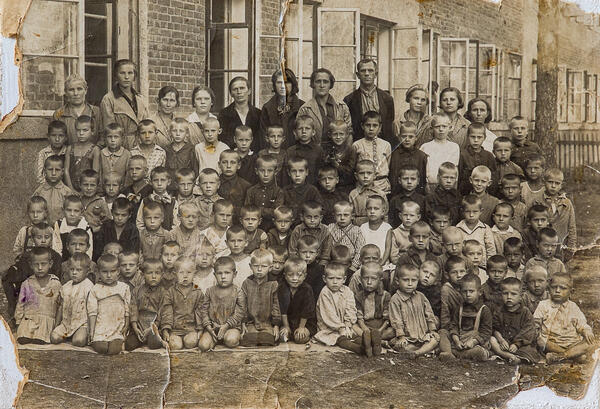In late 1917, the Russian Soviet Federative Socialist Republic established a Ministry of Social Security. Its primary objective was to reduce the number of homeless children and help other people in need. The first orphanages and children’s homes were opened in 1918. These institutions were state-funded and provided children with medical care, upbringing, and education.
Before that time there had been no such institutions in Russia. Orphans and illegitimate children were beggars and lived in monastery or church shelters. They received no medical care, and adolescents were often exploited as free labor. Because of that the mortality rate among children sometimes reached 95 percent.
In 1918, the Children’s Rescue League was also founded. It helped to transfer orphans from war zones to health resorts. From there they were later sent to special camps, where they received training in various crafts. However, despite all the efforts of the authorities, in 1921, there were still over 7 million homeless children in Russia.
During the Russian Civil War, thousands of children became orphans. The Tambov Governorate was no exception. This photograph from the museum’s collection was taken around 1920, over a century ago. It shows children from the orphanage, which had just been established by Komsomol members in the workers’ settlement at the Tambov Gunpowder Factory.
Young men and women took care of the orphans. Once they staged a play and collected 95 rubles — a considerable sum at that time — which they donated to the orphanage. By May Day, they were able to raise another 311 rubles to buy presents for the orphans.
Back then, the orphanage lacked a lot of things. However, factory workers took care of the children and strove to make their lives easier. The Tambov Gunpowder Factory management constantly monitored the welfare of the orphanage. Although the factory itself was experiencing difficulties, with many production lines shut down due to supply shortages, its employees continued to help the orphans as much as possible.
Before that time there had been no such institutions in Russia. Orphans and illegitimate children were beggars and lived in monastery or church shelters. They received no medical care, and adolescents were often exploited as free labor. Because of that the mortality rate among children sometimes reached 95 percent.
In 1918, the Children’s Rescue League was also founded. It helped to transfer orphans from war zones to health resorts. From there they were later sent to special camps, where they received training in various crafts. However, despite all the efforts of the authorities, in 1921, there were still over 7 million homeless children in Russia.
During the Russian Civil War, thousands of children became orphans. The Tambov Governorate was no exception. This photograph from the museum’s collection was taken around 1920, over a century ago. It shows children from the orphanage, which had just been established by Komsomol members in the workers’ settlement at the Tambov Gunpowder Factory.
Young men and women took care of the orphans. Once they staged a play and collected 95 rubles — a considerable sum at that time — which they donated to the orphanage. By May Day, they were able to raise another 311 rubles to buy presents for the orphans.
Back then, the orphanage lacked a lot of things. However, factory workers took care of the children and strove to make their lives easier. The Tambov Gunpowder Factory management constantly monitored the welfare of the orphanage. Although the factory itself was experiencing difficulties, with many production lines shut down due to supply shortages, its employees continued to help the orphans as much as possible.



